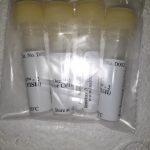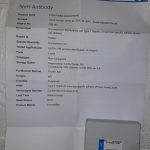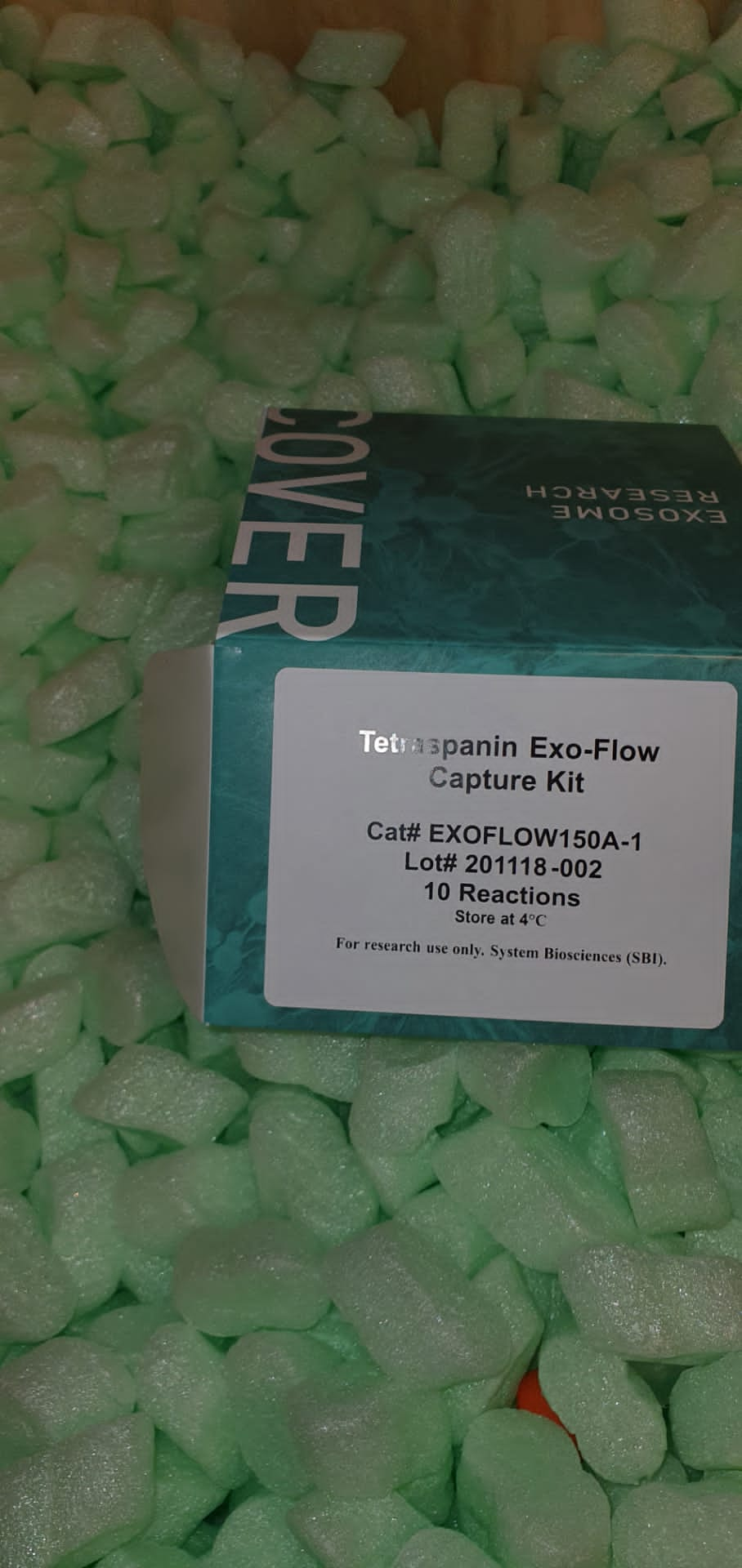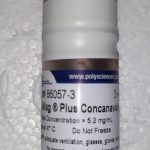The clinical manifestations of neuronal intranuclear inclusion disease (NIID) are heterogeneous, and the premortem diagnosis is mainly based on skin biopsy findings. Abnormal GGC repeat expansions in NOTCH2NLC was recently identified in familial and sporadic NIID. The comparison of diagnostic value between abnormal GGC repeat expansions of NOTCH2NLC and skin biopsy has not been conducted yet.
In this study, skin biopsy was performed in 10 suspected adult NIID patients with clinical and imaging manifestations, and GGC repeat size in NOTCH2NLC was also screened by repeat primed-PCR and GC-rich PCR. We found that five cases had ubiquitin-immunolabelling intranuclear inclusion bodies by skin biopsy, and all of them were identified with abnormal GGC repeat expansions in NOTCH2NLC, among whom four patients showed typical linear hyperintensity at corticomedullary junction on DWI.
Five (5/10) NIID patients were diagnosed by combination of NOTCH2NLC gene detection, skin biopsy or combination of NOTCH2NLC, and typical MRI findings. The diagnostic performance of NOTCH2NLC gene detection was highly consistent with that of skin biopsy (Kappa = 1). The unexplained headache was firstly reported as a new early phenotype of NIID. These findings indicate that NOTCH2NLC gene detection is needed to be a supplement in the diagnose flow of NIID and also may be used as an alternative method to skin biopsy especially in Asian population.
digIS: towards detecting distant and putative novel insertion sequence elements in prokaryotic genomes
Background: The insertion sequence elements (IS elements) represent the smallest and the most abundant mobile elements in prokaryotic genomes. It has been shown that they play a significant role in genome organization and evolution. To better understand their function in the host genome, it is desirable to have an effective detection and annotation tool.
This need becomes even more crucial when considering rapid-growing genomic and metagenomic data. The existing tools for IS elements detection and annotation are usually based on comparing sequence similarity with a database of known IS families. Thus, they have limited ability to discover distant and putative novel IS elements.
Results: In this paper, we present digIS, a software tool based on profile hidden Markov models assembled from catalytic domains of transposases. It shows a very good performance in detecting known IS elements when tested on datasets with manually curated annotation. The main contribution of digIS is in its ability to detect distant and putative novel IS elements while maintaining a moderate level of false positives. In this category it outperforms existing tools, especially when tested on large datasets of archaeal and bacterial genomes.
Conclusion: We provide digIS, a software tool using a novel approach based on manually curated profile hidden Markov models, which is able to detect distant and putative novel IS elements. Although digIS can find known IS elements as well, we expect it to be used primarily by scientists interested in finding novel IS elements.
Gene Expression Changes in a Model Neuron Cell Line Exposed to Autoantibodies from Patients with Traumatic Brain Injury and/or Type 2 Diabetes
Traumatic brain injury and adult type 2 diabetes mellitus are each associated with the late occurrence of accelerated cognitive decline and Parkinson’s disease through unknown mechanisms. Previously, we reported increased circulating agonist autoantibodies targeting the 5-hydroxytryptamine 2A receptor in plasma from subsets of Parkinson’s disease, dementia, and diabetic patients suffering with microvascular complications.
Here, we use a model neuron, mouse neuroblastoma (N2A) cell line, to test messenger RNA expression changes following brief exposure to traumatic brain injury and/or type 2 diabetes mellitus plasma harboring agonist 5-hydroxytryptamine 2A receptor autoantibodies.
We now report involvement of the mitochondrial dysfunction pathway and Parkinson’s disease pathways in autoantibody-induced gene expression changes occurring in neuroblastoma cells. Functional gene categories upregulated significantly included cell death, cytoskeleton-microtubule function, actin polymerization or depolymerization, regulation of cell oxidative stress, mitochondrial function, immune function, protein metabolism, and vesicle function.
Gene categories significantly downregulated included microtubule function, cell adhesion, neurotransmitter release, dopamine metabolism synaptic plasticity, maintenance of neuronal differentiation, mitochondrial function, and cell signaling.
Taken together, these results suggest that agonist 5-hydroxytryptamine receptor autoantibodies (which increase in Parkinson’s disease and other forms of neurodegeneration) mediate a coordinating program of gene expression changes in a model neuron which predispose to neuro-apoptosis and are linked to human neurodegenerative diseases pathways.
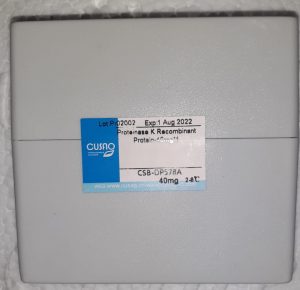
stjosephs-hospital
Novel Alzheimer’s disease risk variants identified based on whole-genome sequencing of APOE ε4 carriers
Alzheimer’s disease (AD) is a progressive neurodegenerative disease associated with a complex genetic etiology. Besides the apolipoprotein E ε4 (APOE ε4) allele, a few dozen other genetic loci associated with AD have been identified through genome-wide association studies (GWAS) conducted mainly in individuals of European ancestry.
Recently, several GWAS performed in other ethnic groups have shown the importance of replicating studies that identify previously established risk loci and searching for novel risk loci. APOE-stratified GWAS have yielded novel AD risk loci that might be masked by, or be dependent on, APOE alleles.
We performed whole-genome sequencing (WGS) on DNA from blood samples of 331 AD patients and 169 elderly controls of Korean ethnicity who were APOE ε4 carriers. Based on WGS data, we designed a customized AD chip (cAD chip) for further analysis on an independent set of 543 AD patients and 894 elderly controls of the same ethnicity, regardless of their APOE ε4 allele status.
Combined analysis of WGS and cAD chip data revealed that SNPs rs1890078 (P = 6.64E-07) and rs12594991 (P = 2.03E-07) in SORCS1 and CHD2 genes, respectively, are novel genetic variants among APOE ε4 carriers in the Korean population.
In addition, nine possible novel variants that were rare in individuals of European ancestry but common in East Asia were identified. This study demonstrates that APOE-stratified analysis is important for understanding the genetic background of AD in different populations.
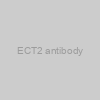 ECT2 antibody |
|
70R-5714 |
Fitzgerald |
50 ug |
EUR 467 |
|
|
|
Description: Rabbit polyclonal ECT2 antibody raised against the middle region of ECT2 |
 ECT2 antibody |
|
70R-5730 |
Fitzgerald |
50 ug |
EUR 467 |
|
|
|
Description: Rabbit polyclonal ECT2 antibody raised against the middle region of ECT2 |
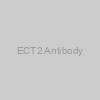 ECT2 Antibody |
|
F53947-0.05ML |
NSJ Bioreagents |
0.05 ml |
EUR 140.25 |
|
|
|
Description: Epithelial cell-transforming sequence 2 oncogene is a guanine nucleotide exchange factor (GEF) that catalyzes the exchange of GDP for GTP. Promotes guanine nucleotide exchange on the Rho family members of small GTPases, like RHOA, RHOC, RAC1 and CDC42. Required for signal transduction pathways involved in the regulation of cytokinesis. Component of the centralspindlin complex that serves as a microtubule-dependent and Rho-mediated signaling required for the myosin contractile ring formation during the cell cycle cytokinesis. Regulates the translocation of RHOA from the central spindle to the equatorial region. Plays a role in the control of mitotic spindle assembly; regulates the activation of CDC42 in metaphase for the process of spindle fibers attachment to kinetochores before chromosome congression. Involved in the regulation of epithelial cell polarity; participates in the formation of epithelial tight junctions in a polarity complex PARD3-PARD6-protein kinase PRKCQ-dependent manner. Plays a role in the regulation of neurite outgrowth. Inhibits phenobarbital (PB)- induced NR1I3 nuclear translocation. Stimulates the activity of RAC1 through its association with the oncogenic PARD6A-PRKCI complex in cancer cells, thereby acting to coordinately drive tumor cell proliferation and invasion. Also stimulates genotoxic stress-induced RHOB activity in breast cancer cells leading to their cell death. |
 ECT2 Antibody |
|
F53947-0.2ML |
NSJ Bioreagents |
0.2 ml |
EUR 330.65 |
|
|
|
Description: Epithelial cell-transforming sequence 2 oncogene is a guanine nucleotide exchange factor (GEF) that catalyzes the exchange of GDP for GTP. Promotes guanine nucleotide exchange on the Rho family members of small GTPases, like RHOA, RHOC, RAC1 and CDC42. Required for signal transduction pathways involved in the regulation of cytokinesis. Component of the centralspindlin complex that serves as a microtubule-dependent and Rho-mediated signaling required for the myosin contractile ring formation during the cell cycle cytokinesis. Regulates the translocation of RHOA from the central spindle to the equatorial region. Plays a role in the control of mitotic spindle assembly; regulates the activation of CDC42 in metaphase for the process of spindle fibers attachment to kinetochores before chromosome congression. Involved in the regulation of epithelial cell polarity; participates in the formation of epithelial tight junctions in a polarity complex PARD3-PARD6-protein kinase PRKCQ-dependent manner. Plays a role in the regulation of neurite outgrowth. Inhibits phenobarbital (PB)- induced NR1I3 nuclear translocation. Stimulates the activity of RAC1 through its association with the oncogenic PARD6A-PRKCI complex in cancer cells, thereby acting to coordinately drive tumor cell proliferation and invasion. Also stimulates genotoxic stress-induced RHOB activity in breast cancer cells leading to their cell death. |
 ECT2 Antibody |
|
MBS7106333-005mg |
MyBiosource |
0.05mg |
EUR 190 |
 ECT2 Antibody |
|
MBS7106333-01mg |
MyBiosource |
0.1mg |
EUR 270 |
 ECT2 Antibody |
|
MBS7106333-5x01mg |
MyBiosource |
5x0.1mg |
EUR 1205 |
 ECT2 Antibody |
|
MBS9217316-005mL |
MyBiosource |
0.05mL |
EUR 210 |
 ECT2 Antibody |
|
MBS9217316-02mL |
MyBiosource |
0.2mL |
EUR 430 |
 ECT2 Antibody |
|
MBS9217316-5x02mL |
MyBiosource |
5x0.2mL |
EUR 1910 |
 ECT2 Antibody |
|
MBS9630936-01mL |
MyBiosource |
0.1mL |
EUR 260 |
 ECT2 Antibody |
|
MBS9630936-02mL |
MyBiosource |
0.2mL |
EUR 305 |
 ECT2 Antibody |
|
MBS9630936-5x02mL |
MyBiosource |
5x0.2mL |
EUR 1220 |
 ECT2 Antibody |
|
MBS9633319-5x1mg |
MyBiosource |
5x1mg |
EUR 1545 |
 ECT2 Antibody |
|
MBS9417336-01mL |
MyBiosource |
0.1mL |
EUR 305 |
 ECT2 Antibody |
|
MBS9417336-5x01mL |
MyBiosource |
5x0.1mL |
EUR 1230 |
) ECT2 Antibody (Center) |
|
MBS9206215-008mL |
MyBiosource |
0.08mL |
EUR 210 |
) ECT2 Antibody (Center) |
|
MBS9206215-04mL |
MyBiosource |
0.4mL |
EUR 430 |
) ECT2 Antibody (Center) |
|
MBS9206215-5x04mL |
MyBiosource |
5x0.4mL |
EUR 1910 |
 ECT2 Conjugated Antibody |
|
C43917 |
SAB |
100ul |
EUR 476.4 |
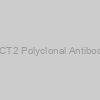 ECT2 Polyclonal Antibody |
|
E-AB-53424-120uL |
Elabscience Biotech |
120uL |
EUR 240 |
|
|
|
Description: Unconjugated |
 ECT2 Polyclonal Antibody |
|
E-AB-53424-200uL |
Elabscience Biotech |
200uL |
EUR 399 |
|
|
|
Description: Unconjugated |
 ECT2 Polyclonal Antibody |
|
E-AB-53424-20uL |
Elabscience Biotech |
20uL |
EUR 73 |
|
|
|
Description: Unconjugated |
 ECT2 Polyclonal Antibody |
|
E-AB-53424-60uL |
Elabscience Biotech |
60uL |
EUR 143 |
|
|
|
Description: Unconjugated |
 ECT2 Polyclonal Antibody |
|
MBS2563326-002mL |
MyBiosource |
0.02mL |
EUR 135 |
 ECT2 Polyclonal Antibody |
|
MBS2563326-006mL |
MyBiosource |
0.06mL |
EUR 190 |
 ECT2 Polyclonal Antibody |
|
MBS2563326-012mL |
MyBiosource |
0.12mL |
EUR 265 |
 ECT2 Polyclonal Antibody |
|
MBS2563326-02mL |
MyBiosource |
0.2mL |
EUR 415 |
 ECT2 Polyclonal Antibody |
|
MBS2563326-5x02mL |
MyBiosource |
5x0.2mL |
EUR 1835 |
 ECT2 Conjugated Antibody |
|
MBS9452153-01mLAF350 |
MyBiosource |
0.1mL(AF350) |
EUR 480 |
 ECT2 Conjugated Antibody |
|
MBS9452153-01mLAF405 |
MyBiosource |
0.1mL(AF405) |
EUR 480 |
 ECT2 Conjugated Antibody |
|
MBS9452153-01mLAF488 |
MyBiosource |
0.1mL(AF488) |
EUR 480 |
 ECT2 Conjugated Antibody |
|
MBS9452153-01mLAF555 |
MyBiosource |
0.1mL(AF555) |
EUR 480 |
 ECT2 Conjugated Antibody |
|
MBS9452153-01mLBiotin |
MyBiosource |
0.1mL(Biotin) |
EUR 480 |
 ECT2 Polyclonal Antibody |
|
RD253424A-120uL |
Reddot Biotech |
120μL |
EUR 360 |
|
|
|
Description: The protein encoded by this gene is a guanine nucleotide exchange factor and transforming protein that is related to Rho-specific exchange factors and yeast cell cycle regulators. The expression of this gene is elevated with the onset of DNA synthesis and remains elevated during G2 and M phases. In situ hybridization analysis showed that expression is at a high level in cells undergoing mitosis in regenerating liver. Thus, this protein is expressed in a cell cycle-dependent manner during liver regeneration, and is thought to have an important role in the regulation of cytokinesis. Several transcript variants encoding different isoforms have been found for this gene. |
 ECT2 Polyclonal Antibody |
|
RD253424A-200uL |
Reddot Biotech |
200μL |
EUR 630 |
|
|
|
Description: The protein encoded by this gene is a guanine nucleotide exchange factor and transforming protein that is related to Rho-specific exchange factors and yeast cell cycle regulators. The expression of this gene is elevated with the onset of DNA synthesis and remains elevated during G2 and M phases. In situ hybridization analysis showed that expression is at a high level in cells undergoing mitosis in regenerating liver. Thus, this protein is expressed in a cell cycle-dependent manner during liver regeneration, and is thought to have an important role in the regulation of cytokinesis. Several transcript variants encoding different isoforms have been found for this gene. |
 ECT2 Polyclonal Antibody |
|
RD253424A-20uL |
Reddot Biotech |
20μL |
EUR 109.5 |
|
|
|
Description: The protein encoded by this gene is a guanine nucleotide exchange factor and transforming protein that is related to Rho-specific exchange factors and yeast cell cycle regulators. The expression of this gene is elevated with the onset of DNA synthesis and remains elevated during G2 and M phases. In situ hybridization analysis showed that expression is at a high level in cells undergoing mitosis in regenerating liver. Thus, this protein is expressed in a cell cycle-dependent manner during liver regeneration, and is thought to have an important role in the regulation of cytokinesis. Several transcript variants encoding different isoforms have been found for this gene. |
 ECT2 Polyclonal Antibody |
|
RD253424A-60uL |
Reddot Biotech |
60μL |
EUR 214.5 |
|
|
|
Description: The protein encoded by this gene is a guanine nucleotide exchange factor and transforming protein that is related to Rho-specific exchange factors and yeast cell cycle regulators. The expression of this gene is elevated with the onset of DNA synthesis and remains elevated during G2 and M phases. In situ hybridization analysis showed that expression is at a high level in cells undergoing mitosis in regenerating liver. Thus, this protein is expressed in a cell cycle-dependent manner during liver regeneration, and is thought to have an important role in the regulation of cytokinesis. Several transcript variants encoding different isoforms have been found for this gene. |
 ECT2 antibody - middle region |
|
MBS3210758-01mL |
MyBiosource |
0.1mL |
EUR 455 |
 ECT2 antibody - middle region |
|
MBS3210758-5x01mL |
MyBiosource |
5x0.1mL |
EUR 1995 |
 ECT2 antibody - middle region |
|
MBS3210759-01mL |
MyBiosource |
0.1mL |
EUR 455 |
 ECT2 antibody - middle region |
|
MBS3210759-5x01mL |
MyBiosource |
5x0.1mL |
EUR 1995 |
 ECT2 Antibody - middle region |
|
MBS3223078-01mL |
MyBiosource |
0.1mL |
EUR 455 |
 ECT2 Antibody - middle region |
|
MBS3223078-5x01mL |
MyBiosource |
5x0.1mL |
EUR 1995 |
 ECT2 Antibody, HRP conjugated |
|
1-CSB-PA888001LB01HU |
Cusabio |
-
Ask for price
-
Ask for price
|
|
|
|
|
Description: A polyclonal antibody against ECT2. Recognizes ECT2 from Human. This antibody is HRP conjugated. Tested in the following application: ELISA |
 ECT2 Antibody, HRP conjugated |
|
MBS7106334-005mg |
MyBiosource |
0.05mg |
EUR 190 |
 ECT2 Antibody, HRP conjugated |
|
MBS7106334-01mg |
MyBiosource |
0.1mg |
EUR 270 |
 ECT2 Antibody, HRP conjugated |
|
MBS7106334-5x01mg |
MyBiosource |
5x0.1mg |
EUR 1205 |
 ECT2 Antibody, FITC conjugated |
|
1-CSB-PA888001LC01HU |
Cusabio |
-
Ask for price
-
Ask for price
|
|
|
|
|
Description: A polyclonal antibody against ECT2. Recognizes ECT2 from Human. This antibody is FITC conjugated. Tested in the following application: ELISA |
 ECT2 Antibody, FITC conjugated |
|
MBS7106335-005mg |
MyBiosource |
0.05mg |
EUR 190 |
 ECT2 Antibody, FITC conjugated |
|
MBS7106335-01mg |
MyBiosource |
0.1mg |
EUR 270 |
 ECT2 Antibody, FITC conjugated |
|
MBS7106335-5x01mg |
MyBiosource |
5x0.1mg |
EUR 1205 |
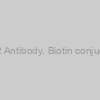 ECT2 Antibody, Biotin conjugated |
|
1-CSB-PA888001LD01HU |
Cusabio |
-
Ask for price
-
Ask for price
|
|
|
|
|
Description: A polyclonal antibody against ECT2. Recognizes ECT2 from Human. This antibody is Biotin conjugated. Tested in the following application: ELISA |
 ECT2 Antibody, Biotin conjugated |
|
MBS7106336-005mg |
MyBiosource |
0.05mg |
EUR 190 |
 ECT2 Antibody, Biotin conjugated |
|
MBS7106336-01mg |
MyBiosource |
0.1mg |
EUR 270 |
 ECT2 Antibody, Biotin conjugated |
|
MBS7106336-5x01mg |
MyBiosource |
5x0.1mg |
EUR 1205 |
 ECT2 Mouse Monoclonal Antibody |
|
E10G34303 |
EnoGene |
100 μl |
EUR 275 |
|
Description: Biotin-Conjugated, FITC-Conjugated , AF350 Conjugated , AF405M-Conjugated ,AF488-Conjugated, AF514-Conjugated ,AF532-Conjugated, AF555-Conjugated ,AF568-Conjugated , HRP-Conjugated, AF405S-Conjugated, AF405L-Conjugated , AF546-Conjugated, AF594-Conjugated , AF610-Conjugated, AF635-Conjugated , AF647-Conjugated , AF680-Conjugated , AF700-Conjugated , AF750-Conjugated , AF790-Conjugated , APC-Conjugated , PE-Conjugated , Cy3-Conjugated , Cy5-Conjugated , Cy5.5-Conjugated , Cy7-Conjugated Antibody |
 ECT2 Rabbit Polyclonal Antibody |
|
E10G12612 |
EnoGene |
100 μl |
EUR 275 |
|
Description: Biotin-Conjugated, FITC-Conjugated , AF350 Conjugated , AF405M-Conjugated ,AF488-Conjugated, AF514-Conjugated ,AF532-Conjugated, AF555-Conjugated ,AF568-Conjugated , HRP-Conjugated, AF405S-Conjugated, AF405L-Conjugated , AF546-Conjugated, AF594-Conjugated , AF610-Conjugated, AF635-Conjugated , AF647-Conjugated , AF680-Conjugated , AF700-Conjugated , AF750-Conjugated , AF790-Conjugated , APC-Conjugated , PE-Conjugated , Cy3-Conjugated , Cy5-Conjugated , Cy5.5-Conjugated , Cy7-Conjugated Antibody |
 ECT2 Rabbit Polyclonal Antibody |
|
E10G05742 |
EnoGene |
100 μl |
EUR 275 |
|
Description: Biotin-Conjugated, FITC-Conjugated , AF350 Conjugated , AF405M-Conjugated ,AF488-Conjugated, AF514-Conjugated ,AF532-Conjugated, AF555-Conjugated ,AF568-Conjugated , HRP-Conjugated, AF405S-Conjugated, AF405L-Conjugated , AF546-Conjugated, AF594-Conjugated , AF610-Conjugated, AF635-Conjugated , AF647-Conjugated , AF680-Conjugated , AF700-Conjugated , AF750-Conjugated , AF790-Conjugated , APC-Conjugated , PE-Conjugated , Cy3-Conjugated , Cy5-Conjugated , Cy5.5-Conjugated , Cy7-Conjugated Antibody |
 Blocking Peptide) ECT2 Antibody (Center) Blocking Peptide |
|
MBS9221071-INQUIRE |
MyBiosource |
INQUIRE |
Ask for price |
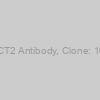 Monoclonal ECT2 Antibody, Clone: 1691CT516.3.3 |
|
AMM02569G |
Leading Biology |
0.1ml |
EUR 580.8 |
|
Description: A Monoclonal antibody against Human ECT2. The antibodies are raised in Mouse and are from clone 1691CT516.3.3. This antibody is applicable in WB, E |
 Antibody) Epithelial Cell Transforming Sequence 2 (ECT2) Antibody |
|
20-abx104055 |
Abbexa |
-
Ask for price
-
Ask for price
-
Ask for price
-
Ask for price
-
Ask for price
|
-
100 ug
-
10 ug
-
1 mg
-
200 ug
-
50 ug
|
|
|
 Antibody) Epithelial Cell Transforming Sequence 2 (ECT2) Antibody |
|
20-abx104056 |
Abbexa |
-
Ask for price
-
Ask for price
-
Ask for price
-
Ask for price
-
Ask for price
|
-
100 ug
-
10 ug
-
1 mg
-
200 ug
-
50 ug
|
|
|
 Antibody) Epithelial Cell Transforming Sequence 2 (ECT2) Antibody |
|
abx028279-400ul |
Abbexa |
400 ul |
EUR 627.6 |
|
|
 Antibody) Epithelial Cell Transforming Sequence 2 (ECT2) Antibody |
|
abx028279-80l |
Abbexa |
80 µl |
EUR 343.2 |
|
|

























)
)
)






































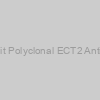






 Blocking Peptide)

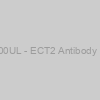
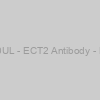
 Antibody)
 Antibody)
 Antibody)
 Antibody)

